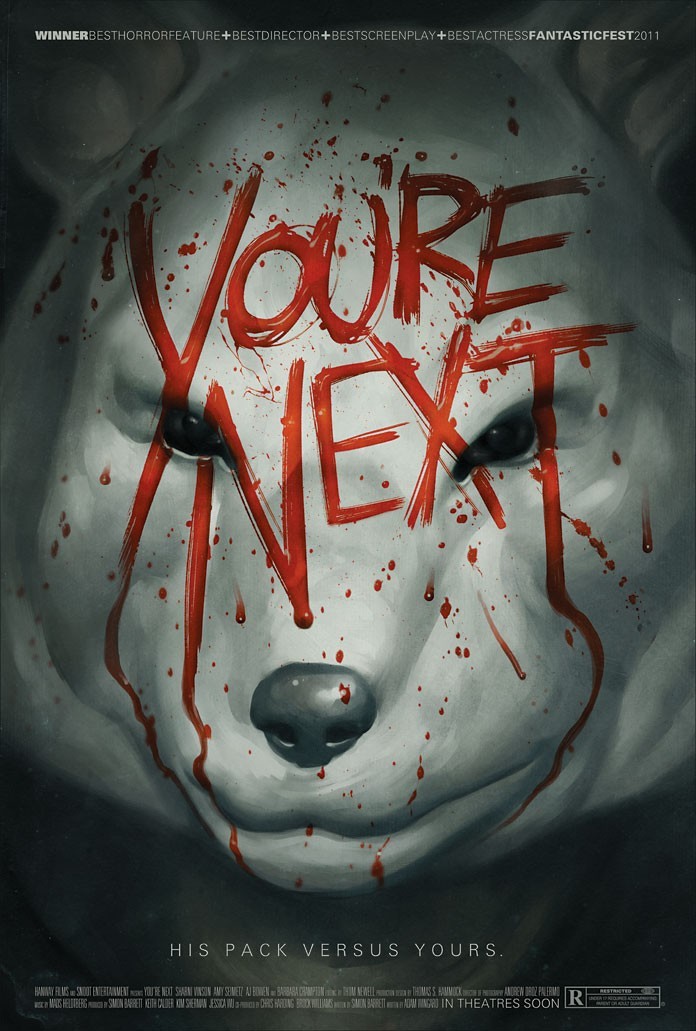The Visit
M. Night Shyamalan has had a rough path getting to The Visit. Shyamalan had been on a very
slow and steady decline since his breakout smash hit The Sixth Sense but once the thudding failure salvo of Lady in the Water, The Happening, The Last Airbender,
and After Earth arrived it looked as
if the once promising writer/director’s career was fast approaching it’s
expiration date. He needed a hit and he needed it fast. After multiple attempts
at more high-concept features that were met with a mixture of frustration and
unintentional laughter, The Visit finds
its creator returning to simpler and sturdier ground for this modest concoction
of family and frights.
The film still bears marks of his signature style despite
working within genre confines. The found footage approach seems as though it
would rob Shyamalan of his careful sense of shot composition, something that
even his weakest works bear, but the director gets around this by establishing
the teenaged Rebecca (Olivia DeJonge) as a film geek with the technical
know-how to keep the damn camera steady. Rebecca wants to see the grandparents
(Peter McRobbie and Deanna Dunagan) that she and her brother Tyler (Ed
Oxenbould) never met before and form a documentary about their week-long visit
to the family farm. Initial awkwardness aside, things start off fairly well
between the estranged generations, although the siblings realize over time that
something isn’t quite right with their older relatives.
While advertised as a straight horror ride of creep-outs, The Visit stands apart from the pack
with its emphasis on the family dynamic that fuels its story. Shyamalan is
unable to avoid all of the pitfalls that plague other found footage entries.
The middle section of the film drags without much action to rely on and a sense
of repetition creeps in. There’s a particularly hair-raising sequence just
after the halfway mark involving multiple cameras and a kitchen knife that
would have suitably raised the stakes had it occurred earlier in the plot.
However, the filmmaker is able to soften the lull of this stretch thanks to his
juggling of the parallel stories. The family tension at the heart of the story,
which began with Rebecca and Tyler’s mother running away from home as a
teenager, infuses a dramatic backbone for the film to rest itself on so that it
isn’t relying on shallow jumps and temporary scares.
The cast of actors is also stronger than usual for the
genre, with the confidence of DeJonge and Oxenbould’s performances standing out
especially. The young duo are shorn of the affectations that bring down most
child actor roles and carry their roles with natural charisma, something that
is miraculous in Oxenbould’s case given that Tyler’s inclination to rap could
have easily made him an annoying brat. McRobbie grounds the situations with his
aloof humanity, even if something seems “off” with John, but it’s Dunagan who
carries the real weight of the picture. She’s frequently at the center of the
film’s most tense sequences and believably portrays a character who can be
picture-perfect sweet one moment and then flip over into unhinged hysteria
another time. Dunagan’s performance goes a long way in adding unpredictability
to Doris’ presence; we’re never sure when she’s harmless and lucid or about to
fly off her rocker.
Like with The Sixth
Sense, Shyamalan is less interested in providing a constant stream of
shocks and more with building a sense of creeping dread and unease, which is
aided by keeping the level of danger created by the grandparents’ actions hazy.
There is no left field rug pull to be found here, and the director admirably
keeps things simple and avoids providing a far-out explanation for the
grandparents’ actions. It isn’t until the climax that tensions reach a
sustained fever pitch, and there’s a delicate balance to the proceedings that
doesn’t put the children in danger in cheap ways or in unbelievable scenarios.
There are some minor directorial decisions along the way that betray the
handheld camera approach, like jarring establishing shots of the sky and the
out-of-place use of music, but these quibbles are easily ignored with the vice
of suspense tightening around the characters in the home stretch.
It has been rather dispiriting to see such a raw and
original talent as Shyamalan devolve into self-indulgence and general
incompetence in the last decade after the immense promise of his early work.
But The Visit proves that there’s
always room to allow for a fallen star to pick itself back up even after it
crashed into the embarrassing lands of The
Happening and The Last Airbender.
Shyamalan will need to find the right inspiration before he can make another
hit on the level of The Sixth Sense and
Unbreakable (and Signs too, which is much better than it’s remembered as), but The Visit proves that an idiosyncratic director
such as himself can take familiar material and mold it into an effective work
that fits into their wheelhouse of filmmaking.









